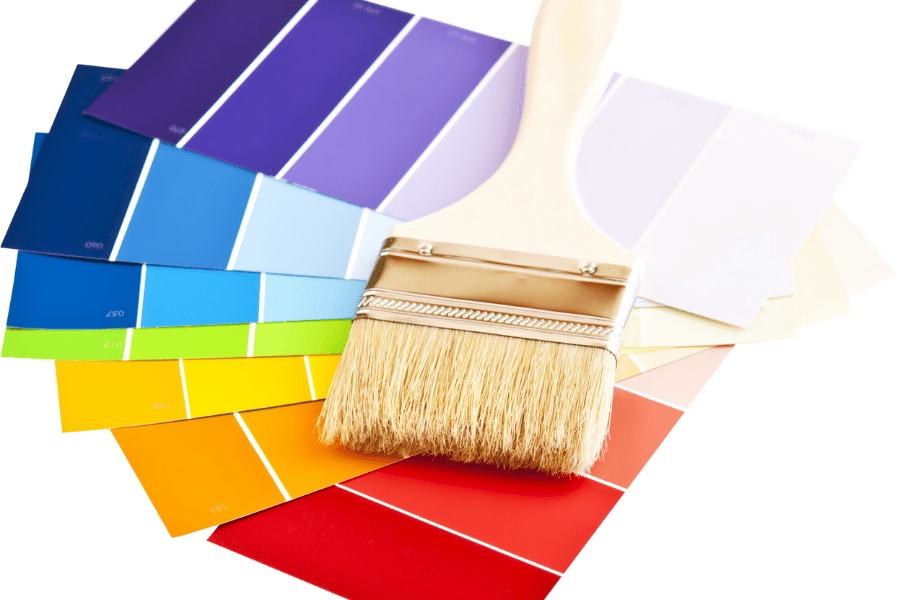As we explore the vibrant journey of residential paint colors, it becomes evident that each decade has not only brought new styles but also reflected profound shifts in societal attitudes and cultural trends.

From the cheerful hues of the 1950s to the bold choices of the 2010s, let’s take a nostalgic stroll through the evolving palette of home interiors.
1950s: A Cheerful Post-War Era
The 1950s marked a period of optimism and growth, with colors that reflected a cheerful, forward-thinking attitude. Soft pastels like mint green, turquoise, and pink became household favorites.
These colors adorned kitchens, living rooms, and bathrooms, complementing the era’s fascination with futuristic designs and booming consumerism.
1960s: Bold and Psychedelic
As the cultural landscape shifted with the 1960s counterculture, so did color trends. Vibrant, psychedelic colors such as neon greens, bright oranges, and shocking pinks took center stage.
These bold choices mirrored the youth revolution and were all about expressing individuality and non-conformity, often highlighted in striking combinations and geometric patterns.
1970s: Earthy and Organic
The 1970s brought a stark contrast to the previous decade, with a turn towards earth tones and natural palettes. Avocado green, harvest gold, and burnt orange were popular, reflecting the era’s growing environmental awareness and the back-to-nature movement.
These colors were often paired with natural materials like wood and stone, emphasizing comfort and organic living.
1980s: Glamorous Excess
The 1980s are often remembered for their ethos of excess, this was no different in the world of interior design. Deep burgundy, navy, and emerald provided a dramatic backdrop for metallic accents and glossy finishes.
This decade also saw a resurgence of pastel combinations, but with a more polished, sophisticated twist, suitable for the glamorous lifestyles of the era.
1990s: Minimalism and Neutrals
Following the colorful exuberance of the 1980s, the 1990s toned down with neutrals and muted shades. Beige, taupe, and soft grays dominated the scene, reflecting the decade’s embrace of minimalism and understated elegance.
This palette served as a calming counterbalance to the technological frenzy and economic boom of the period, promoting a sense of peace and stability in the home.
2000s: Eclectic and Bold
The new millennium welcomed an eclectic mix of colors, reflecting global influences and digital age connectivity. Vibrant blues, rich reds, and deep purples were popular, and often used in more adventurous ways to personalize spaces.
This decade was about breaking the rules of traditional color schemes, with homeowners seeking to make their spaces unique and reflective of their personalities.
2010s: Return to Sophistication
The 2010s saw a return to sophisticated, yet understated elegance with a renewed interest in grays and off-whites, as well as navy and charcoal serving as modern neutrals. These colors were often complemented by pops of bold color, like turquoise or coral, reflecting a blend of tradition and modernity.
This trend was partly driven by the rise of social media platforms where homeowners could showcase and draw inspiration for their interiors.
As we move forward, the history of color trends offers more than just a visual archive; it provides insights into the changing dynamics of cultural priorities and aesthetics.
Each decade’s preference tells a story of its time, reflecting hopes, beliefs, and the prevailing social spirit.
Understanding these trends not only enriches our appreciation of past styles but also inspires future choices, allowing us to continue crafting spaces that feel both timely and timeless.
Whether you’re thinking of repainting your living room in a retro hue or opting for a modern palette, remember that the colors you choose can deeply influence the atmosphere of your home.
As we continue to evolve culturally, so will our color trends, always ready to tell the next chapter of our collective story.

Leave a Reply